The birth of the Soviet missile defense system. The end of Kartsev
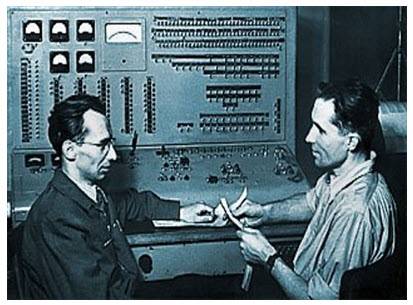
The paradox of Soviet-style management was that two offices began to do a common business for the country from different ends, pulling the blanket over themselves and categorically unwilling to cooperate (more precisely, only Kisunko wanted to cooperate, all the others tried to shove him off in every possible way).
M-4
For missile defense, obviously, radars (and computers for them) and interceptors (again, with computers for them) were needed. Mints distanced himself from this topic and built radars on Lake Balkhash, which were not related to the Kisunko project - radars of the meter range TsSO-P (later, on its basis, the Dnestr, Dnestr-M and Dnipro radars were created), intended for missile attack warning systems and radar of the decimeter range TsSO-S6, intended for the anti-satellite project weapons Chelomey (the "Taran" system, we have already written about it, the project itself was closed in 1964, but the "Don-2N" radar in the centimeter range grew out of this radar).
Two prototypes of the M4 were installed one piece per complex, and the power for the decimeter radar was no longer enough for the car, and it was necessary to modify it along the way, introducing interface equipment - the so-called. primary processing unit (UPO), in fact a DSP coprocessor.
The upgraded vehicle received the M4-M index.
Kisunko did not get anything from the Ministry of Radio Industry at all - he had to do everything himself, relying on alternative branches of government. Coordinated the work on ABM KB-1 (SKB-30, Ministry of Defense), computers were built by ITMiVT (Academy of Sciences of the USSR), the anti-missile was manufactured in MKB "Fakel" (Ministry of Defense), and there was a gag with the radar - the Ministry of Radio Industry, of course, could not be connected in any way ...
As a result, they turned to NII-37 (NIIDAR), owned by the Ministry of Communications Industry. The interface equipment was handled by TsNIIS and MNIRTI (Academy of Sciences of the USSR). Actually, the entire Sary-Shagan test site was originally ordered by the Ministry of Defense for testing the "A" system, while the Ministry of Radio Industry also rushed to grab a piece of the pie and placed its experimental radars of the early warning and "Taran" projects there.
Kisunko, of course, did not have access to them, he had his own radar RE-2 (later - early warning radars "Danube-2" and "Danube-3"). Before the arrival of the M-40 / M-50 complex, they had to work, registering and processing data on target tracking on their own KB-1 machine - the monstrous Strela.
The first experimental guidance was carried out not yet on the rocket, but on the IS-3, which was dangling above the Earth at that time, and the target designation was manual, at first the satellite was detected using the KT-50 kinetic theodolite, its coordinates were determined and then the radar was guided.
In the first version of the M4, the classical pulse-potential circuit of the assembly of logic elements was used on far from the fastest P-16B transistors, which practically repeats the tube logic elements of the M2 machine in circuitry. Yu. V. Rogachev proposed to remake the serial machine for more modern high-frequency transistors such as P416, 2T301 or P609.
As a result, in 1964, the more advanced M4-2M, almost identical to the M4, but on a more modern element base, went into the series. Until 1969, more than 50 of them were produced, alas, by that time it itself was already hopelessly outdated, the world was already beginning to switch to microprocessors.
The car existed in three modifications, which received the standard in the USSR brain-exploding indices 5E71, 5E72 and 5E73. The first stage of the early warning missile system was also commissioned in 1969, and these machines worked in it for about 30 years.
М4-2М performed operations on real numbers, own arithmetic was used, one digit per sign, 8 - per exponent and 20 - per mantissa. An original feature of the ALU design was that all operations, logical, arithmetic and control, were carried out in one cycle, about 3 cycles required only interruptions. Such a sophisticated scheme made it possible to squeeze out an impressive performance for Soviet cars of those years - about 220 KIPS. With a million K-340A Yuditsky could not be compared, but the M4 was universal, not specialized.
The last machine of the series was released already in 1984 (we do not know what is more here - pride in the architecture excellent by the standards of 1960 or shame that the world was already working with the IBM PC), and the last one was replaced (according to Yu. V. Rogachev, one of the designers and friend of Kartsev) in 2000.
Further, Kartsev was awaited by two failures, which seriously undermined his health and faith in himself.
Inflation
We have already talked about one of them - the M5 project, an economic machine for the State Planning Commission, which cost Brook's place. Many argue that socialism does not know the concept of inflation, in fact, apart from 1991, the USSR experienced two massive levels of price increases after the war, without taking into account the smooth natural growth. The first happened in 1947, when the total money supply in the country was reduced by 3,5 times. Many remember the predatory Pavlovian reform, but Stalin's one was no less predatory.
The resolution of the Council of Ministers said:
In fact, it was the population that took the greatest sacrifices. The essence of the reform was that the old banknotes were exchanged for new ones in a ratio of 10: 1 with a constant price scale. There were some exceptions: deposits in savings banks up to 3 thousand rubles were fully preserved, deposits from 3 thousand to 10 thousand rubles were cut by the state by a third, and only half of the amount of 10 thousand rubles was returned.
At the same time, there was a conversion of "eternal" government loans, which no one was ever going to return anyway, they were all combined regardless of the previously promised interest rate and changed to new ones at the rate of 3: 1, and even with a decrease in interest. The reform was being prepared as a secret one, but rumors still leaked to the people.
Moscow engineer Viktor Kondratyev described it this way:
She wrote Pravda on December 16, 1947.
For a long time, however, there was not enough money, and the second inflation had to be extinguished under Khrushchev in 1961, changing the money in a ratio of 10: 1 one more time.
This was preparation for a large-scale economic reform in 1965, called Kosygin. It was in the midst of the preparation of the reform that the final battle was fought between cybernetic economists and economists of the old formation, such as the author of the reform, Yevsey Grigorievich Lieberman. Doctor of Economics V.D.Belkin, who worked together with I.S.Bruk, who in the last years of his activity became interested in economic problems, in connection with the planned economic reform, tells about this:
“The control system that the party has created is a quick response system, but its disadvantage is the lack of feedback,” he said. You need to have the perspicacity of J.S.Brook to say such words then.
... A strong battle took place in the State Planning Committee (on price policy), at which its chairman Lomako, this last official of the Stalinist style, said to Brook: the State Economic Council created at that time under the USSR State Planning Committee. - Author's note), and this revolt will cost you dearly. "
He was simply forced to retire.
As a result, the riot really cost dearly - the INEUM team was partially dispersed, all work on the M-5 was stopped, Brook was fired.
M-9
Kartsev continued to work on the M-9 supercomputer in the INEUM special development department until 1967, commissioned by Kisunko, and presented the car for the competition. We also already know what happened next, after all the twists and turns the project was rejected, and Kisunko did not receive any of the computers - neither the M-9 nor the 5E53.
After the second disappointment, Kartsev moved to the Ministry of Radio Industry, to the NIIVK created under him, hoping that here he would be allowed to develop computers without problems and hindrances.
Note that the M-9 machine, with all its merits, was extremely complex in terms of programming. Recall that in M-9 there were 3 pairs of "processor-mask" blocks that perform operations on vectors and matrices. The first bundle consisted of a matrix of 32x32 16-bit processors (the so-called functional block) and a matrix of 32x32 1-bit processors for operations on mask bits. The second bundle consisted of a vector coprocessor of 32 nodes and the same mask block. Finally, the third bundle consisted of an associative block performing comparison and selection of subarrays by content, and the same mask block for it.
The M-9 was a prototype, it was proposed to assemble production vehicles from a relatively arbitrary set of these blocks, in particular, the M-10 was supposed to consist only of a functional block, and the monstrous M-11 from eight. It all sounded insanely cool, the only problem was how to manage this magnificence.
In any case, a machine of this class, to demonstrate its full computing power, had to work with a perfectly parallel program, which meant either the design of a control block of insane complexity, or writing an insane complexity of an optimizing compiler. Or (if you follow the path of the CUDA architecture and the OCCAM language written for Inmos transputers), it was required to develop a separate parallel programming language, however, there was nothing unsolvable in this task.
The M-9 project was presented by Kartsev in March 1967 at a symposium on computing systems and environments in the Siberian Branch of the USSR Academy of Sciences. The speech of the leading mathematician-programmer E.V. Glivenko on the construction of the software for such a multiprocessor system convinced of its realizability.
Yu.V. Rogachev writes:
In 1968, RTI was just beginning to develop a project for the second stage of an early warning system - the Daryal radar, which requires a computing power of at least 5 MIPS (the vaunted BESM-6 produced about 1 MIPS).
M-10
As a result, RTI remembered Kartsev's project, without giving his development to Kisunko, they decided to put it into action themselves.
Despite the formal separation of Kartsev's group into a separate organization, they were not even allocated premises, and employees sat all over Moscow, wherever they could.
Kartsev recalls:
Having separated from INEUM, the team received the premises of the former carpentry workshop of one of the enterprises on Sokol with an area of 590 sq. M. meters. To accommodate the entire team, they had to search all over Moscow and rent non-residential premises, mostly of a semi-basement type. The institute built its own building (model school) only in 1975, and the laboratory building according to a special project in 1985-1986 after the death of Kartsev.
In general, the leading technical school in the USSR ITMiVT Lebedev (which never in its entire history never quarreled with any authorities and therefore was treated kindly in every possible way) considered, following the position of its founder and guru, multiprocessor and multi-machine complexes evil. Lebedev can be understood, he was terribly worn out with debugging a much simpler BESM-6, due to its wretched element base and the low quality of Soviet components. But Kartsev and Yuditsky were geniuses of a completely different class, they possessed the secrets of assembling reliable computers from unreliable components.
BESM-6 used 60 thousand transistors, 180 thousand semiconductor diodes, 12 million ferrite cores. Computing complex of three computers M-10 contained 2 thousand microcircuits, 100 million transistors and 1,2 million ferrite cores. This is not only a pile of metal, but also an unimaginable number of connections that had to be made to work harmoniously. In the end, everything worked out - the uptime of the M-120 was equal to an unimaginable 10% - a value that characterizes the best IBM mainframes. The downtime of the complex due to malfunctions did not exceed 99,999 minutes a year!
Naturally, Kartsev could not help but make envious people.
Remembers B.N.Malinovsky:
It was difficult, but by the middle of 1970 Kartsev submitted a set of documentation for the M-10 to the Zagorsk plant. The car was mastered there only two years later, and the serial copy was released in 1973.
Again, pay attention to the cycle: six years (!) From the development of an idea to the first production car - an inconceivable, monstrous time frame for which everything that could become obsolete became obsolete. Created in 1967, the M-10 (not to mention the M-9) would have become one of the fastest in the world on a fairly modern element base, assembled in 1973 - it was not included in the top twenty, and was also assembled from obsolete scrap metal by world standards. The USSR shamelessly slowed down all innovations: situations when less than 5-7 years passed in the development of computers from idea to implementation can be counted on one hand.
In addition to the computers for the Daryal radar (computer complexes 63I6 and 68I6) and the command post of the early warning system (complex 17L6 of six vehicles), on the basis of the M-10 computer, which received a typical insane (so that evil spies would not understand) cipher 5E66 in the Ministry of Defense, there was a computer complex for the SKKP of General Designer A.I.Savin was created.
In total, by the time production ceased in 1986, about 50 sets of M-10 were produced. Again, the USSR harnessed and accelerated for a long time, but having accelerated, it could no longer slow down. Performance at 5 MIPS was good for the early 70s (the CDC 7600 was 24) and excellent for the 60s, but not bad for the 1982 Cray Y-MP with its 400 MIPS. Actually, by the mid-80s, even the VAX would have more than coped with the tasks of the M-10. Nevertheless, during 1974-1979, until the appearance of "Elbrus-1", the M-10 was the most powerful domestic computer.
Kartsev himself wrote about the performance of the M-10:
However, the M-10 was not allowed to work for peaceful purposes - all existing complexes were produced only to service the early warning system. By the way, with the programming of the M-10, the expected problems arose, especially with the stability of the OS.
Major General V.P. Panchenko, who participated in the acceptance of the M-10, recalls:
He is echoed by the designer of the early warning system V.G. Repin:
Note that the M-10 was assembled on the already familiar GIS series 217 "Ambassador" with a maximum frequency of the order of tens of megahertz. The development of the TTL-series 133, ripped off from the TI SN54, was completed at the Zelenograd NIIME in September 1969, and mass production began in 1970, when the documentation for the M-10 had already arrived at the Zagorsk plant. On the basis of the 133 series, in particular, Elbrus-1 was designed.
The ROM for the M-10 was made according to a rather original scheme - capacitor, the firmware was stored on replaceable metal punched cards 265x68 nodes. The punch card was a thin plate 0,5 mm thick with polyethylene insulating pads on both sides. The ROM block could accommodate 128 such punched cards with a capacity of eight 34-bit numbers each. The total capacity of the PC of the machine was 512 KB, the read time was 0,5 μs, and the cycle time was 1,3 μs. The volume of the car turned out to be monstrous - 31 cabinets (!), Of which 21 were occupied by memory cabinets.
In general, the Western school of supercomputers provided for some kind of product design based on optimization. For example, the Cray-1 was shaped like an art deco sofa, not because Seymour Cray was a fan of modern furniture, but because this shape facilitated the shortest signal path and optimal cooling. Nevertheless, a machine with a capacity of 30 M-10 fit into a volume of about 2 cubic meters (not counting the power and cooling systems, in both cases they occupied an entire hall), the USSR could not afford such delights due to the monstrous element base - with thin-film GIS you won't go too far, it's good that all the closets fit into at least one room.
OS M-10, which was finally assembled, worked in a time-sharing mode with 8 independent terminals. The most advanced version of the OS allowed connecting up to 48 terminals with output to an EC7064 interactive display with a keyboard and light pen. Programming was carried out in assembler M-10, ALGOL 60 and FORTRAN.
In general, such programming problems are not surprising: neither ALGOL and FORTRAN were parallelizable (from the word - at all), in the West they created their own languages for such architectures, such as OCCAM, so one can only imagine how they were tormented with the M-10 who tried to adapt the unadjustable to it.
The M-10 contained software debugging hardware, which was incredibly cool at the time.
M.A.Kartsev describes this feature of the technique as follows:
As a result, the M-10 could perform a halt under rather complex conditions such as "interruption if control was transferred to cells with numbers from such and such to such and such" or "if such and such address modifier register "and so on. Not Burroughs, of course, but by the standards of Soviet cars, an unrealistic level of technology. The range of actions in response to an interrupt was also huge - from trivial printing a memory dump, to displaying the internal clock or manually overwriting some registers.
What is funny, Kartsev himself perfectly understood all the squalor of the imperative languages of the 1960s as applied to parallel programming and suggested that all programmers write directly and decisively in the M-10 assembler:
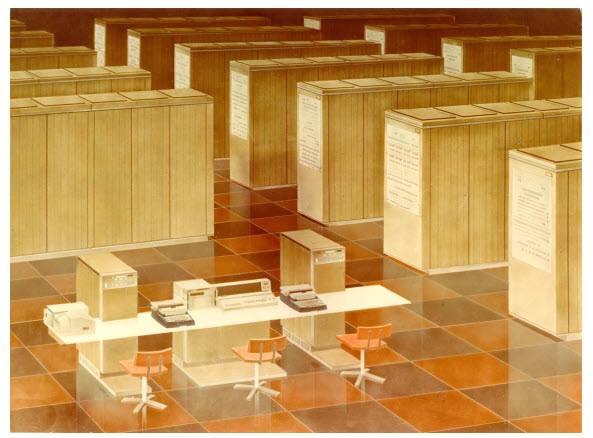
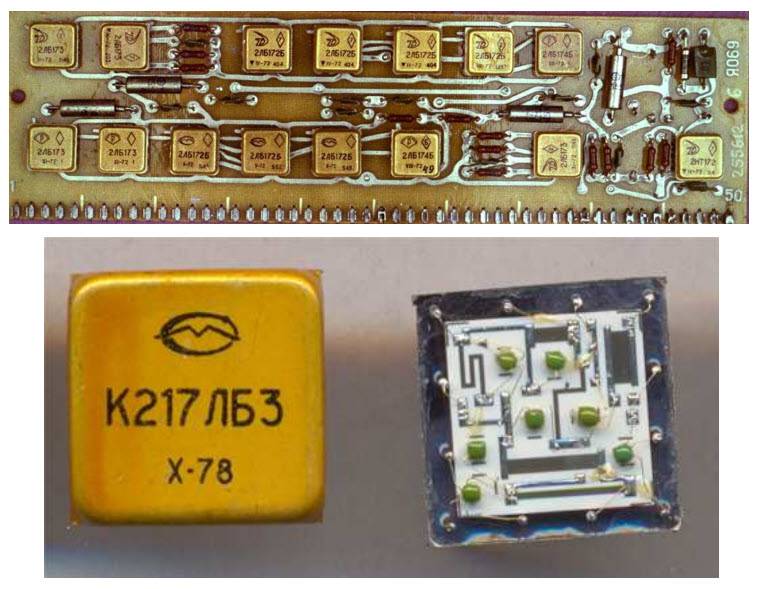
In general, the unfortunate Kartsev directly recommended throwing out Fortrans and Algols if it was necessary to squeeze out more performance from his machine than from a toaster, and write everything with his hands in machine codes.
The problem that we mentioned - a super-complex UU or a super-complex compiler - was solved in the USSR in a non-trivial way - by super-complicated manual writing of programs in a low-level language. For some reason, no one thought to develop for M-10 a high-level language and programming environment of a healthy person corresponding to it in terms of power and convenience.
In 1977, the M-10 was modernized, mainly at the expense of memory, it was possible to push 21 cabinets into 4 double ones. The M-10M became the first computer that NIIVK received at its own disposal, having created a multi-user simulation stand on its basis. This stand, in particular, designed multilayer printed circuit boards for the new M-13 machine, the development of which began in 1977. It was on this machine that the calculations of plasma physics, which were cited above, and many other scientific works were carried out.
Comparison with the "Elbrus" in the M-10 also happened, and the results were interesting. B. Andreev from the Leningrad Design Bureau, who worked with both systems and debugged both machines, was quite competent in comparing them:
As we have already said, ITMiVT was a rather specific place and developed quite specific machines in it, which became legendary not because of their unique consumer qualities, but because of Lebedev's charisma and his ideal image in the eyes of the Central Committee of the CPSU.
As a result, in the USSR, only one series of machines was officially mythologized, cast, in the words of the greats, in granite and declared the gold standard - BESM and everything that was created on its basis (well, Elbrus, as a grandchild second cousin along the Burtsev line). All other developments were considered either secret or marginal, or did not go into series, or did not receive even one tenth of such honors.
For the Don-2N-level radar, more powerful computing means were required (as a result, they cost four 10-processor Elbrus-2 per station, each with a capacity of 125 MIPS, totaling about 500 MIPS, which corresponds to approximately a modern 7nm HiSilicon Kirin 980 tablet) , and Kartsev finally decided to build the greatest supercomputer.
M-13
The M-13 computer project envisaged a series of machines based on three basic models of increasing power. At the same time, the small model (M-13/10) differs from the medium (M-13/20) and large (M-13/30) quantitatively - the completeness of memory devices, additional external devices, etc., on which the performance depends.
The central processing unit has three configurations and can provide performance depending on the version - 12, 24 or 48 MIPS, RAM - 8, 5, 17 or 34 MB, the bandwidth of the central switch - 0,800; 1,6 or 3,2 GB / s (which is cool even by modern standards!), The throughput of the multiplex channel is 40, 70 or 100 MB / s.
The M-13 also included Kartsev's proprietary processor, designed to work with highly sparse data. Its equivalent performance reached 2,4 GIPS.
In general, the M-13 was a further development of the same original ideas embodied in the M-9 layout, and it is insanely annoying that this unique architecture did not receive its embodiment back in 1967.
The M-13 was built on the same TTL logic of the 133, 130 and 530 series as the first Elbrus, and many domestic military computers of the 1980s, including the on-board computer of the S-300 complex, which we will also talk about separately.
Kartsev disliked powerful ECL logic, which was not surprising - the problems with the Soviet clones of Motorola MC10000 became legendary, the yield of suitable microcircuits was measured at the beginning almost in units, the developers of Elbrus-2 and Electronics SS BIS tormented them mercilessly, up to the fact that Burtsev was forced to personally travel to the plant and sort out batches of chips with his hands in search of more or less efficient ones.
The emitter-connected logic of high integration made extremely stringent requirements not only to the quality of manufacture, but also to the installation of components, power supply and cooling, which also came back to haunt the developers of these systems more than once.
In 1981, Kartsev recruits the finally broken and tired Yuditsky, saving an old friend from the need to work as some kind of TV repairman, but for Yuditsky it is too late.
He no longer takes part in the development and in 1983 he dies at the age of 53. This was a blow for Kartsev, superimposed on no less unpleasant events.
Let us give the floor to his colleague and deputy Yu.V. Rogachev, who later wrote a book about these sad events:
However, neither the results of the work of the Pilot Plant, nor the approaching delivery time for the M-13 computer to the facility for the Daryal-U radar station forced the heads of the DMZ and YURZ to start manufacturing the machine. Failed to force these factories to start production of the M-13 computer and the leadership of the CNPO "Vympel". In an effort to somehow justify their impotence, the leadership of the Association decided to recoup the developers of the machine, announcing in March 1983 at the balance committee the work of NIIVK was unsatisfactory. Moreover, this was expressed in an incorrect form, without specifying the reasons and specific facts explaining such a decision. Deputy General Director V. V. Sychev behaved especially dishonestly in this matter. Just a few days before the balance commission, getting acquainted with the results of tests according to the technical specifications of the OPP device of the experimental model of the M-13 computer, he gave a positive assessment of the work of the institute both on the M-13 machine and on the 63I6 computer complex as part of the Daryal radar, on which at this time the State tests were being completed. And it was V.V.Sychev who at the balance commission announced a negative assessment of the work of NIIVK.
MA Kartsev, an extremely decent and intelligent man, was shocked by such hypocrisy. He immediately told the general director of the Vympel TsNPO Yu. N. Aksenov that he would not be able to continue working under such leadership. The feeling of injustice in relation to the NIIVK team was an additional burden on the heart and greatly affected the health of M.A.Kartsev. He was greatly worried about the situation with the launch of serial samples of the M-13 computer at the Vympel TsNPO plants: the behavior of the Association's leadership did not promise anything positive in this direction.
Did not clarify the issue with the manufacture of the machine and the meeting on the progress of work on the creation of the radar "Daryal-U", which in mid-April was held at the Radio Engineering Institute by Deputy Minister of Radio Industry OA Losev. They spoke about the difficulties in the production of the station's equipment, especially the difficult situation with the manufacture of the M-13 computer was emphasized. However, our proposal to abandon ambitions and ask the Minister to connect the Zagorsk Electromechanical Plant to the production of M-13 was rejected. At the same time, the directors of the CNPO Vympel factories did not give firm promises to start manufacturing the machine.
Strange at this meeting was the speech of Vympel technologist V. G. Kurbakov, who did not talk about manufacturing technology, but criticized the technical solutions of the chief designer on the architecture of the machine, questioning the operability and operational characteristics of the M-13 computer. Who needed to adjust this presentation, how a person who had absolutely no knowledge of computer technology could make such a statement at a meeting of this level, remained a mystery. Except for the chief designer of the Daryal-U radar AA Vasiliev, who called this speech far-fetched and untrue, no one stopped the presumptuous "specialist" - neither the leadership of the Association, nor the deputy minister. This was already the last straw that overflowed the cup of patience: MA Kartsev announced to OA Losev about his firm decision to raise before the Minister of Radio Industry PS Pleshakov the issue of transferring NIIVK from TsNPO Vympel to the 8th GU MRP.
In the order of preliminary agreement on this issue, on April 19, 1983, M.A.Kartsev invited to the institute the Deputy Minister of the Radio Industry N.V. Gorshkov, who supervises computer technology in the MRP, the chief engineer of the 8th State University, which was in charge of scientific and industrial enterprises of computer technology, in including the Zagorsk Electromechanical Plant. MA Kartsev acquainted them with the M-13 computer - its design, element base, manufacturing technology and the course of setting up experimental devices. In the conversation that followed, Mikhail Aleksandrovich asked to support his proposal to transfer NIIVK to the 8th Main Directorate of MRP and transfer the manufacture of the M-13 computer to the Zagorsk Electromechanical Plant. Consent was obtained.
However, this did not save Kartsev.
The failure of the M-5 and M-9 projects, the death of Yuditsky, the monstrous intrigues with the adoption of the M-13 finally undermined his health. Already before that, he had already experienced a massive heart attack. On April 23, 1983, he was driving his car along Leningradsky Prospekt and suddenly felt unwell. At the Sokol metro station, he parked with all his strength, lost consciousness and died right in the car.
So the path of one of the world's most outstanding computer designers was cut short.
Shortly before that, Kartsev finished his speech on the fifteenth anniversary of the institute as follows:
The development team fought like a lion with the party bureaucrats and officials of Vympel for the release of the car of their teacher and friend.
Rogachev recalls:
The discussion of these projects was interrupted by a telephone call from the minister. PS Pleshakov asked OA Losev to come to him to resolve the issue of NIIVK, informing him that he had N.V. Gorshkov with this issue. (This means that our draft order was presented to P.S. Pleshakov). After a while, we were invited to the minister as well. NV Gorshkov was no longer in the minister's office. Addressing me, Petr Stepanovich said that the leadership of the Ministry appoints me as the director of NIIVK, and the institute retains its existing status and position. This meant that our proposals on the transition to the 8th GU were not accepted, but the proposals of the Central Scientific and Production Association "Vympel" were not accepted either.
And yet, after a while, the question of transferring NIIVK to the 8th GU arose again. At a meeting of the collegium of the Ministry of Radio Industry in October 1983, when discussing the progress of work on the creation of the Daryal-U radar station, I managed to convince the members of the collegium that the CNPO Vympel factories would not master the serial production of the M-13 computer, at least in the coming years. will be able to. Only ZEMZ can save the situation. After a long and heated discussion, the board made a decision on the production of the machine at the Zagorsk Electromechanical Plant and on the transfer of NIIVK to the 8th GU MRP.
However, the implementation of this decision was hampered by some leaders of the Vympel CSPO. In particular, the deputy general director V.V.Sychev tried by various methods, including pressure on the leaders of party and public organizations, on the scientific activists of NIIVK, to force the leadership of the institute to abandon the decision to withdraw from the Association. And only the intervention of the deputy head of the defense department of the Central Committee of the CPSU V.I. Shimko put an end to the red tape with the transfer of NIIVK to the 8th GU MRP. This translation was completed at the end of November 1983.
... The management of the plant refused to use the FOSs previously manufactured at the Vympel CNPO, and decided to make a new set directly on its equipment to guarantee the quality of the MPP. So simply the issue was resolved, which was a stumbling block in TsNPO "Vympel" and kept the institute, and the design bureau of plants, and the management of the Association in tension for two years. In January 1984, ZEMZ received practically all the design documentation required to launch the M-13 computer into production. And by the middle of 1986, NIIVK received all the prototype devices manufactured with the customer's acceptance. Complex docking of the machine as a whole began, and by the end of 1987 the head model of the M-13 computer had successfully passed the factory tests.
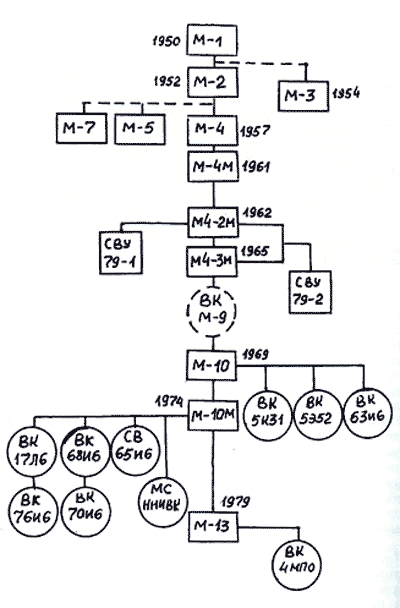
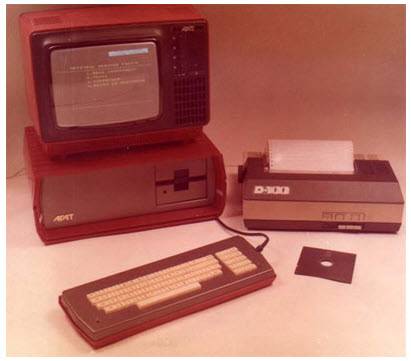
The absolutely typical schizophrenic bureaucracy of the USSR led to the fact that the release of the M-13 was postponed for FOUR years - from 1983 to 1987 there were continuous battles in the spirit of the Kafkian absurdity, questions of subordination and subordination were resolved, and officials tried to share potential awards (if successful) and find who to blame in case of failure.
As a result, the first pilot series of M-13 entered the Daryal-U facility in 1988, with its installation, debugging and acceptance, it took another three years, and only in 1991 the M-13 passed state acceptance. In total, twice as much time was spent on the introduction of the machine as on its construction - eight years! Crazy, unimaginable deadlines by the standards of any country except the USSR. Naturally, by that time an excellent machine by the standards of 1979-1980 had turned into a pumpkin, literally a couple of years later microprocessors of comparable power appeared ...
Vladimir Mikhailovich Kartsev recalled his father like this:
It is obvious that such people were not as adapted as possible to work in the USSR system.
So, at the end of the cycle, we just have to consider the only scientific school that supplied serial computers for all types of air defense and missile defense - from S-300 to A-135, the great and terrible ITMiVT and its machines, after which we will collect all the pieces of the puzzle and will ready to answer the final question about the development and fate of the national missile defense.
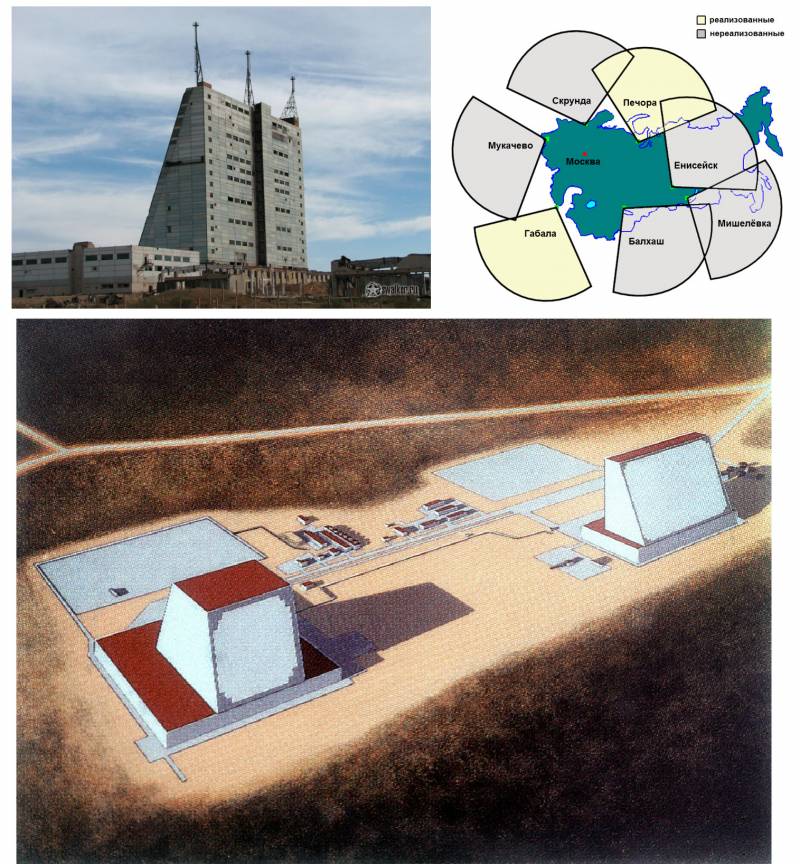
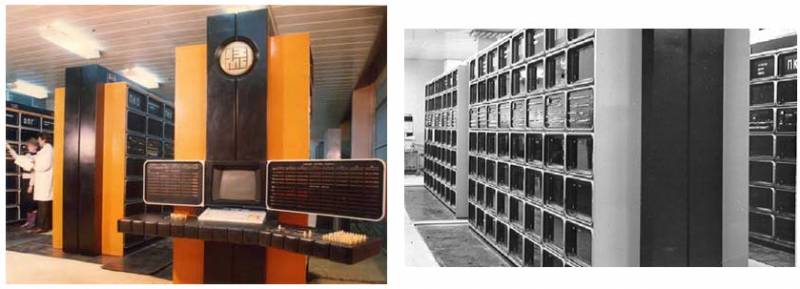
Information